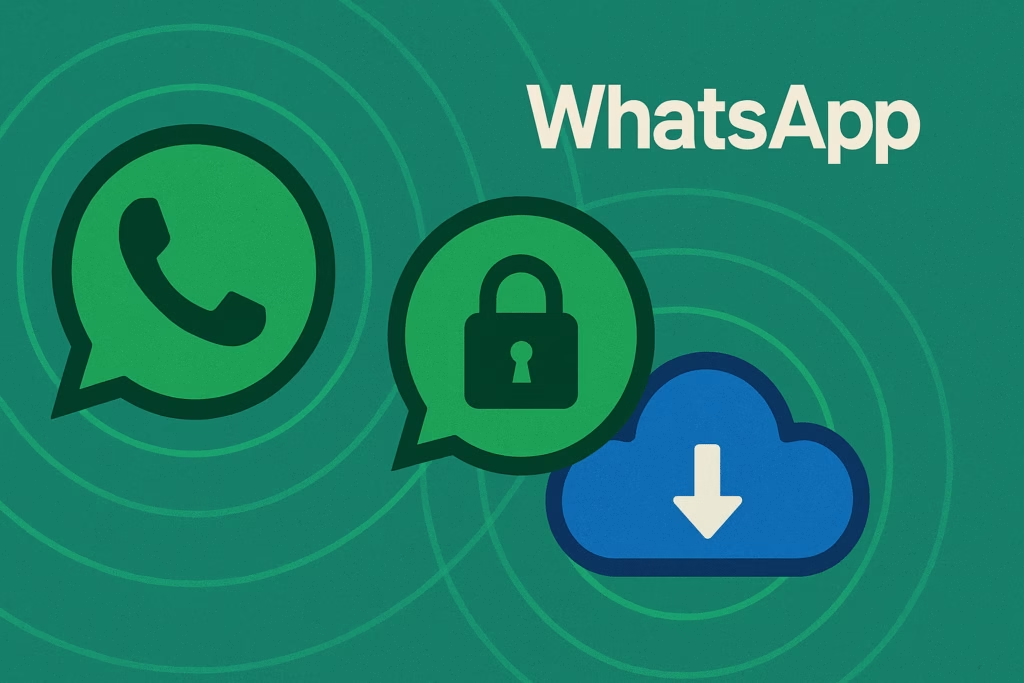
Cybercriminals have evolved far beyond the crude email scams of the early internet era. Today’s hackers employ sophisticated phishing methods that can deceive even tech-savvy individuals and bypass advanced security systems. Understanding these modern cybercrime tactics isn’t just beneficial—it’s essential for protecting yourself, your business, and your digital assets from increasingly clever attacks.
The landscape of hackers phishing has transformed dramatically, with attackers now leveraging artificial intelligence, social engineering psychology, and advanced phisher tools to create nearly indistinguishable fake communications. This comprehensive guide reveals the methods cybercriminals use today and provides actionable strategies to recognize and defend against these threats.
The Evolution of Modern Phishing Attacks
Traditional phishing attacks were often easy to spot—misspelled words, suspicious sender addresses, and generic greetings were telltale signs. However, today’s hacking phishing operations are far more sophisticated. According to the FBI’s Internet Crime Report, phishing attacks resulted in over $10.3 billion in losses in 2022 alone, representing a 76% increase from the previous year.
Modern cybercriminals invest significant time researching their targets, creating personalized attacks that appear legitimate. They study social media profiles, company websites, and public records to craft convincing messages that reference specific details about their victims’ lives or organizations.
Key Characteristics of Advanced Phishing Methods
- Personalization: Attackers use publicly available information to customize messages
- Brand impersonation: Perfect replicas of legitimate company communications
- Multi-channel approaches: Coordinated attacks across email, SMS, and social media
- Time-sensitive urgency: Creating artificial deadlines to pressure quick decisions
- Technical sophistication: Advanced spoofing and encryption techniques
Common Phisher Tools and Techniques
Understanding the tools that hackers use for phishing attacks helps in recognizing and defending against them. Cybercriminals have access to increasingly sophisticated phisher tools that automate and enhance their operations.
Email Spoofing and Domain Manipulation
Hackers use specialized software to manipulate email headers, making messages appear to come from trusted sources. They register domains that closely resemble legitimate organizations, using techniques such as:
- Typosquatting: Registering domains with slight misspellings (e.g., “amaozn.com” instead of “amazon.com”)
- Homograph attacks: Using similar-looking characters from different alphabets
- Subdomain spoofing: Creating subdomains that appear legitimate (e.g., “paypal.secure-login.net”)
Social Engineering Automation
Modern phisher tools can scrape social media profiles and public databases to automatically generate personalized phishing content. These tools analyze victims’ connections, interests, and recent activities to create highly targeted messages that are difficult to distinguish from legitimate communications.
AI-Powered Content Generation
Artificial intelligence has revolutionized hacking phishing capabilities. AI tools can now generate convincing text, create realistic fake documents, and even produce voice clones for phone-based phishing attacks. This technology allows attackers to scale their operations while maintaining high levels of personalization and authenticity.
Advanced Phishing Attack Vectors
Spear Phishing and Whaling
Spear phishing targets specific individuals or organizations, while whaling focuses on high-value targets like executives or government officials. These attacks require extensive reconnaissance and are often part of larger Advanced Persistent Threat (APT) campaigns.
A notable example occurred in 2019 when hackers successfully targeted a Fortune 500 company’s CEO through a sophisticated whaling attack, resulting in a $100 million fraudulent wire transfer. The attackers spent weeks researching the executive’s communication style and business relationships before launching their assault.
Business Email Compromise (BEC)
BEC attacks involve hackers infiltrating legitimate business email accounts to conduct unauthorized transfers or steal sensitive information. These attacks often go undetected for extended periods because they use compromised legitimate accounts rather than spoofed addresses.
Smishing and Vishing
SMS phishing (smishing) and voice phishing (vishing) have become increasingly common as mobile device usage grows. Attackers use these channels to bypass email security filters and reach victims through trusted communication methods.
Red Flags: Identifying Modern Phishing Attempts
While today’s phishing attacks are more sophisticated, trained eyes can still identify warning signs. Here are key indicators to watch for:
Technical Red Flags
- Suspicious URLs: Hover over links to reveal actual destinations before clicking
- Mismatched sender information: Compare display names with actual email addresses
- Unusual file attachments: Be wary of unexpected attachments, especially executable files
- Generic greetings: Legitimate organizations typically use your actual name
Content-Based Warning Signs
- Urgent deadlines: Artificial time pressure to force quick decisions
- Requests for sensitive information: Legitimate companies don’t request passwords or SSNs via email
- Grammar and spelling errors: While less common now, still present in many attacks
- Unusual requests: Actions that don’t align with normal business processes
Defensive Strategies Against Advanced Phishing
Technical Defenses
Implementing robust technical defenses is crucial for protecting against hackers phishing attempts. Essential security measures include:
- Multi-factor authentication (MFA): Adds an extra security layer even if credentials are compromised
- Email filtering and anti-phishing solutions: Advanced tools that detect and block suspicious communications
- Domain-based Message Authentication: Implementing SPF, DKIM, and DMARC protocols
- Regular security updates: Keeping all software and systems current with latest patches
Human-Centered Defenses
Technology alone isn’t sufficient—human awareness remains critical. Organizations should implement comprehensive security awareness programs that include:
- Regular phishing simulation exercises
- Up-to-date training on current hacking phishing trends
- Clear reporting procedures for suspicious communications
- Verification protocols for sensitive requests
Industry-Specific Phishing Threats
Financial Services
The financial sector faces constant phishing pressure, with attackers targeting both institutions and their customers. Forbes reports that financial services experience some of the highest phishing attack rates, often involving sophisticated fake banking portals and payment processors.
Healthcare
Healthcare organizations are particularly vulnerable due to the value of medical records and patient information. Phishing attacks in this sector often exploit the urgency of medical communications and the trust patients place in healthcare providers.
Government and Defense
Government agencies face state-sponsored phishing campaigns designed to steal classified information or disrupt operations. These attacks often involve advanced persistent threats and nation-state actors with significant resources.
The Role of Advanced Threat Protection
Given the sophistication of modern phishing attacks, organizations need comprehensive protection that goes beyond traditional security measures. Advanced threat protection solutions analyze communication patterns, verify sender authenticity, and provide real-time threat intelligence to defend against evolving hacker phishing techniques.
PhishDef’s advanced protection platform combines machine learning algorithms with human expertise to identify and block sophisticated phishing attempts before they reach users. The solution adapts to new attack patterns and provides continuous protection against the latest phisher tools and techniques.
Future Trends in Phishing Evolution
As technology advances, so do the capabilities of cybercriminals. Emerging trends include:
- Deepfake technology: AI-generated video and audio for more convincing social engineering
- IoT device exploitation: Using connected devices as phishing attack vectors
- Blockchain and cryptocurrency scams: Exploiting interest in digital assets
- Supply chain attacks: Targeting vendors to reach ultimate victims
Building a Comprehensive Defense Strategy
Protecting against modern hackers phishing requires a multi-layered approach that combines technology, training, and processes. Key components include:
- Risk assessment: Understanding your organization’s specific vulnerabilities
- Technology implementation: Deploying appropriate security tools and configurations
- Staff training: Ensuring all personnel can recognize and respond to threats
- Incident response: Having clear procedures for when attacks occur
- Continuous improvement: Regularly updating defenses based on threat intelligence
Key Takeaways
Modern hacking phishing attacks represent a significant and evolving threat that requires constant vigilance and sophisticated defenses. Cybercriminals now use advanced phisher tools, AI-powered automation, and detailed reconnaissance to create highly convincing attacks that can fool even security-aware individuals.
Success in defending against these threats requires combining technical solutions with human awareness, implementing multi-layered security approaches, and staying informed about evolving attack methods. Organizations must invest in both technology and training to protect their assets and stakeholders from increasingly sophisticated cybercriminals.
The cost of inadequate protection far exceeds the investment in comprehensive security measures. With billions of dollars lost annually to phishing attacks and the potential for devastating reputational damage, proactive defense is not optional—it’s essential for business survival in today’s threat landscape.
Don’t wait until you become a victim of sophisticated hackers phishing attacks. Protect your organization with PhishDef’s advanced threat protection platform, designed to identify and block even the most sophisticated phishing attempts. Contact us today to learn how our comprehensive security solution can safeguard your business against evolving cyber threats and provide the peace of mind you need in an increasingly dangerous digital world.


